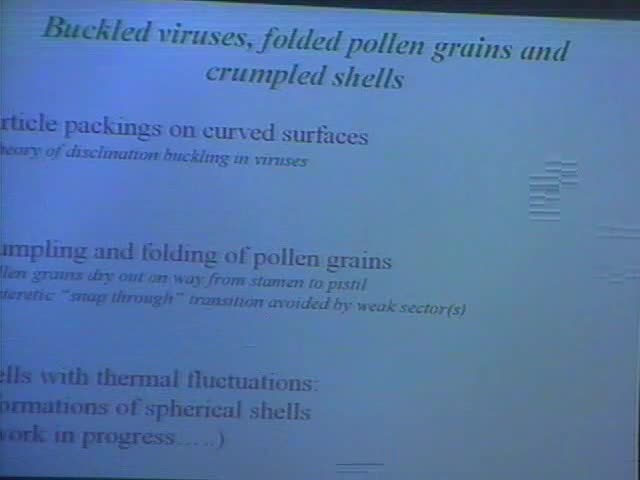Buckled viruses, crumpled shells and folded pollen grains
Presenter
July 24, 2008
Keywords:
- Ordered states
MSC:
- 12J15
Abstract
The difficulty of constructing ordered states on
spheres was recognized by J. J. Thomson, who discovered the
electron and then attempted regular tilings of the sphere in an
ill-fated attempt to explain the periodic table. We first
discuss how protein packings in buckled virus shells solve a
related “Thomson problem”. We then describe the grain boundary
scars that appear on colloidosomes, drug delivery vehicles that
represent another class of solution to this problem. The
remarkable modifications in the theory necessary to account for
thermal fluctuations in crumpled amorphous shells of spider
silk proteins will be described as well. We then apply related
ideas to the folding strategies and shapes of pollen grains
during dehydration when they are released from the anther after
maturity. The grain can be modeled as a pressurized
high-Young-modulus sphere with a weak sector and a nonzero
spontaneous curvature. In the absence of such a weak sector,
these shells crumple irreversibly under pressure via a strong
first order phase transition. The weak sectors (both one and
three-sector pollen grains are found in nature) eliminate the
hystersis and allow easy rehydration at the pollination site,
somewhat like the collapse and subsequent reassembly of a folding chair.
